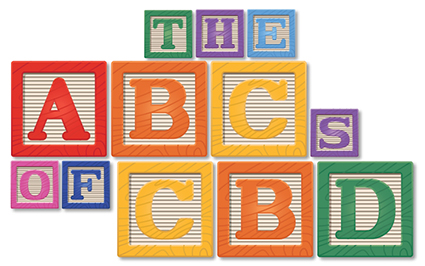The Benefits of CBD for Athletes

What Exactly Is CBD and What Can It Do for Bodybuilders and Athletes?
Cannabidiol, better known by its acronym, CBD, is one of the hottest ingredients in the dietary supplement industry right now. If you haven’t at least heard of CBD, you must be living with your head in the sand! The general health benefits of CBD have been touted for several years, and now this has trickled into the sports supplement world. But can CBD truly provide benefits to athletes? And is it even allowed for use by drug-tested athletes? I’ll answer these questions, but before we get to that, let’s review the history and science behind CBD and clear up some of the confusion and misinformation that’s out there.

The Two Major Cannabinoids: CBD and THC
Research suggests that over 100 cannabinoids have been identified in the cannabis plant. The two major cannabinoids in the cannabis plant are delta-9 tetrahydrocannabinol (THC) and cannabidiol (CBD). THC is well known for its intoxicating properties. It’s the component of cannabis that gets you high. CBD, on the other hand, is non-intoxicating, meaning it lacks the “high” effects that THC delivers. Let me be perfectly clear: CBD does not get you high. However, CBD is known to have anti-anxiety and other behavioral effects that can be beneficial.
CBD is found in the Cannabis sativa plant, and this includes both marijuana and hemp strains. But hemp is the primary source of CBD right now because hemp has much softer regulations and is easier to work with from a legal standpoint. The primary difference between hemp and marijuana is that they have dramatically different levels of the intoxicating chemical delta-9 tetrahydrocannabinol (THC). In hemp, THC levels are generally less than one percent, and legally (in North America), hemp is defined as having less than 0.3 percent THC content, which is a level so low that it has no intoxicating effects. Marijuana plants, on the other hand, have exceptionally high levels of THC. As I mentioned, because hemp has almost no THC in it and has much softer regulations, most companies and manufacturers of CBD products are using hemp as their source material.

The History of Hemp
The cannabis plant, in all its varieties, has been used for centuries for their nutritional value and medicinal properties. More specifically, hemp has a long history of use for industrial purposes. The flowers and resin of the cannabis plant have been used in China since roughly 2700 BC. The plant was used to treat rheumatism, malaria, constipation, menstrual disorders, and even absent-mindedness. During the medieval period, from the fifth to fifteenth centuries, Islamic doctors used cannabis to treat epilepsy, nausea and vomiting, inflammation, and pain. In the 1800s, western medicine began to use cannabis primarily as an analgesic (pain reliever).
Most recently, cannabis has been used to treat epilepsy, anxiety, insomnia, pain, muscle spasms, and glaucoma. The scientific evidence to support the effectiveness of cannabis for the different indications varies greatly. The strongest evidence supporting the beneficial effects of cannabis are found in research studies that look at chronic pain, chemotherapy-induced nausea and vomiting, muscle spasms, and seizures. Many other medicinal uses for cannabis have been proposed and although cannabis is indigenous to Central and South Asia, it’s now a crop that’s being grown around the world for its industrial, nutritional and medicinal properties.
Understanding Cannabinoids and the Endocannabinoid System (ECS)
Cannabinoids, like CBD, are a set of diverse chemical compounds that can act on cannabinoid receptors and interact with the endocannabinoid system in your body. There are phytocannabinoids and endocannabinoids. Phytocannabinoids, such as CBD, are bioactive secondary metabolites produced by the cannabis plant. They are synthesized and accumulate in the trichomes on the surfaces of both cannabis leaves and flowers. Endocannabinoids are endogenous and created within the body. The human endocannabinoid system (ECS) is composed of two primary endocannabinoid messengers, anandamide and 2-arachidonoylglycerol (2-AG), and at least 30 to 50 receptors expressed throughout the body on various cell types that function together to maintain homeostasis. Anandamide and 2-AG levels increase on-demand in response to a given stimuli (e.g., pain). Anandamide and 2-AG are synthesized in a localized, stimulus-dependent manner from membrane phospholipid precursors.
The endocannabinoid system is involved in regulating various physiological and cognitive processes including fertility, pregnancy, pre- and post-natal development, appetite, pain sensation, mood and memory, and mediating the pharmacological effects of cannabis. The ECS is also involved in mediating some of the physiological and cognitive effects of voluntary physical exercise in humans and other animals, such as contributing to exercise-induced euphoria as well as modulating locomotor activity and motivation for rewards. That runner’s high is more than just endorphins—we now know that runner’s high is mainly due to anandamide release from the ECS. The ECS is arguably the most complex and dynamic system in the human body.

How Does CBD Work in the Body?
Two primary endocannabinoid receptors have been identified: CB1 (first cloned in 1990) and CB2 (cloned in 1993), but CBD doesn’t actually bind to either CB1 or CB2 receptors. In fact, CBD has little to no affinity for these receptors, and acts as a partial antagonist to CB1 and as a weak inverse CB2 agonist. At the University of McGill, Dr. Gabriella Gobbi's team demonstrated that CBD does not act on the CB1 cannabinoid receptors like THC but through the mechanism that binds specific receptors involved in anxiety (serotonin 5-HT1A) and pain (vanilloid TRPV1). The body of research is already extremely promising and shows that CBD can have beneficial effects for various health issues, but, when it comes to athletes, are there any real benefits and, if so, what are they?
 CBD and Athletes
CBD and Athletes
Athletes put their bodies under much greater physical stress than the average person. Training and exercise stress stimulate adaptation and greater performance, but prolonged wear and tear and contact sports can lead to injuries and pain, which are obviously detrimental to performance. In addition, many athletes are under constant psychological stress too (the pressure to perform and succeed, confidence issues, etc.), which can be just as detrimental to performance as a physical injury.
Pain Management and Recovery
The main purpose of the endocannabinoid system is thought to be maintaining homeostasis through the regulation of neurotransmitters. As I mentioned, athletes put their bodies under greater stress, leading to pain and inflammation, greater than their ECS can handle. A little bit of inflammation can be good for athletes and help stimulate positive training adaptations. But too much inflammation hinders recovery and hurts performance. There are CB2 receptors in both the brain and periphery, but they are more concentrated in immune tissues. Cannabinoids interacting with CB2 receptors may have an anti-inflammatory effect by reducing cytokine (cell messengers) production. In other words, CBD interacts with CB2 receptors to help tolerate the response when your immune system gets smashed after hard workouts. This is when supplementing with CBD could be helpful in supporting an overtaxed ECS and bringing your body back to homeostasis for optimal recovery.

Alternative to NSAIDs and Opioids
Many athletes have traditionally used nonsteroidal anti-inflammatory drugs (NSAIDs) such as ibuprofen or naproxen or, even worse, opioid-based pharmaceuticals to manage pain associated with training and sports injuries. Chronic use of NSAIDs pose a much greater health risk than previously thought, and the epidemic of opioid addiction in both Canada and the USA right now is literally killing people by the hour, all day, every day. So, any natural alternatives that can help with pain management (that are devoid of any negative side effects) are of great interest to athletes and their coaches. In fact, all major professional sports leagues and player associations, including the NFL, NBA, NHL, and MLB, are all investigating the benefits of CBD for their athletes. Although cannabinoids such as CBD might not be as effective as opioids for relieving acute, high-intensity pain, they can be just as effective for long-term pain management without any negative side effects or addiction issues.
Get articles delivered to you each month by signing up to the FREE Muscle Insider newsletter. Just click here.

